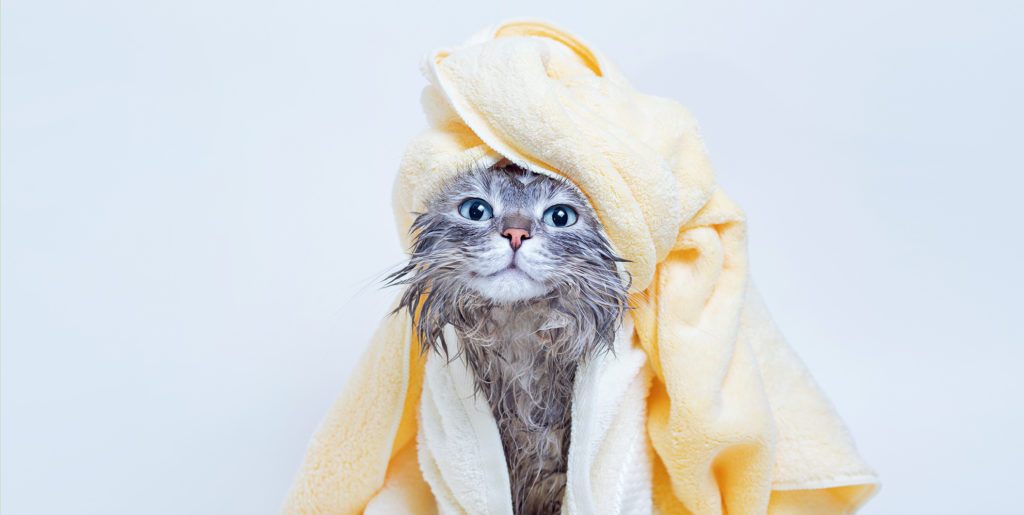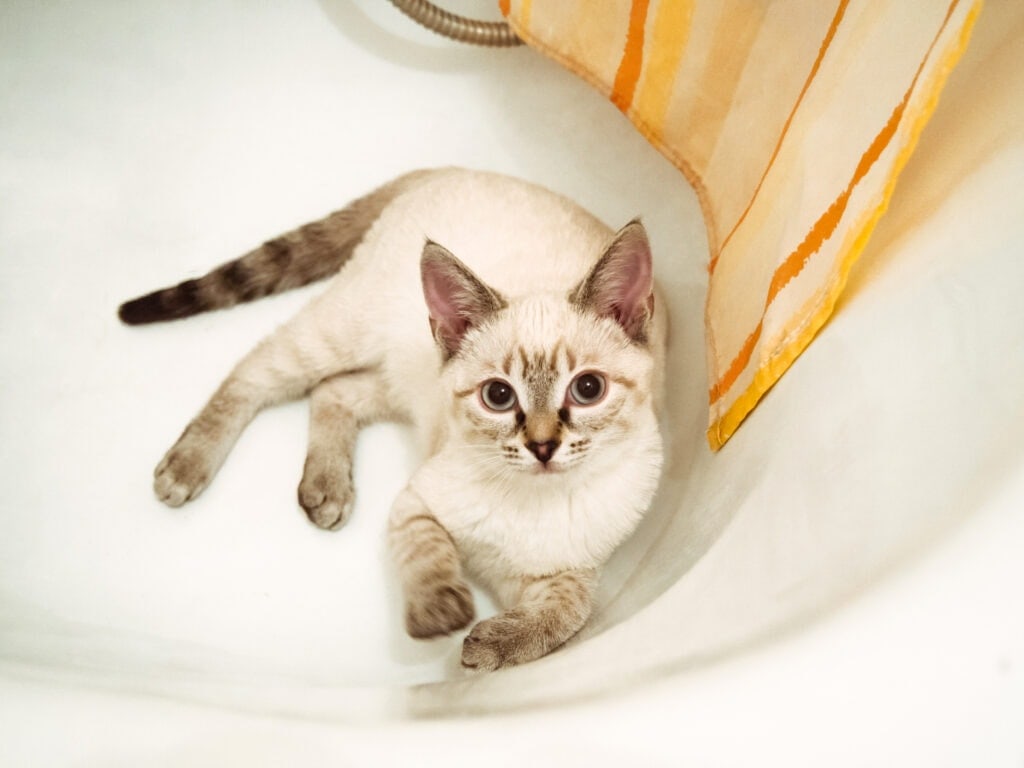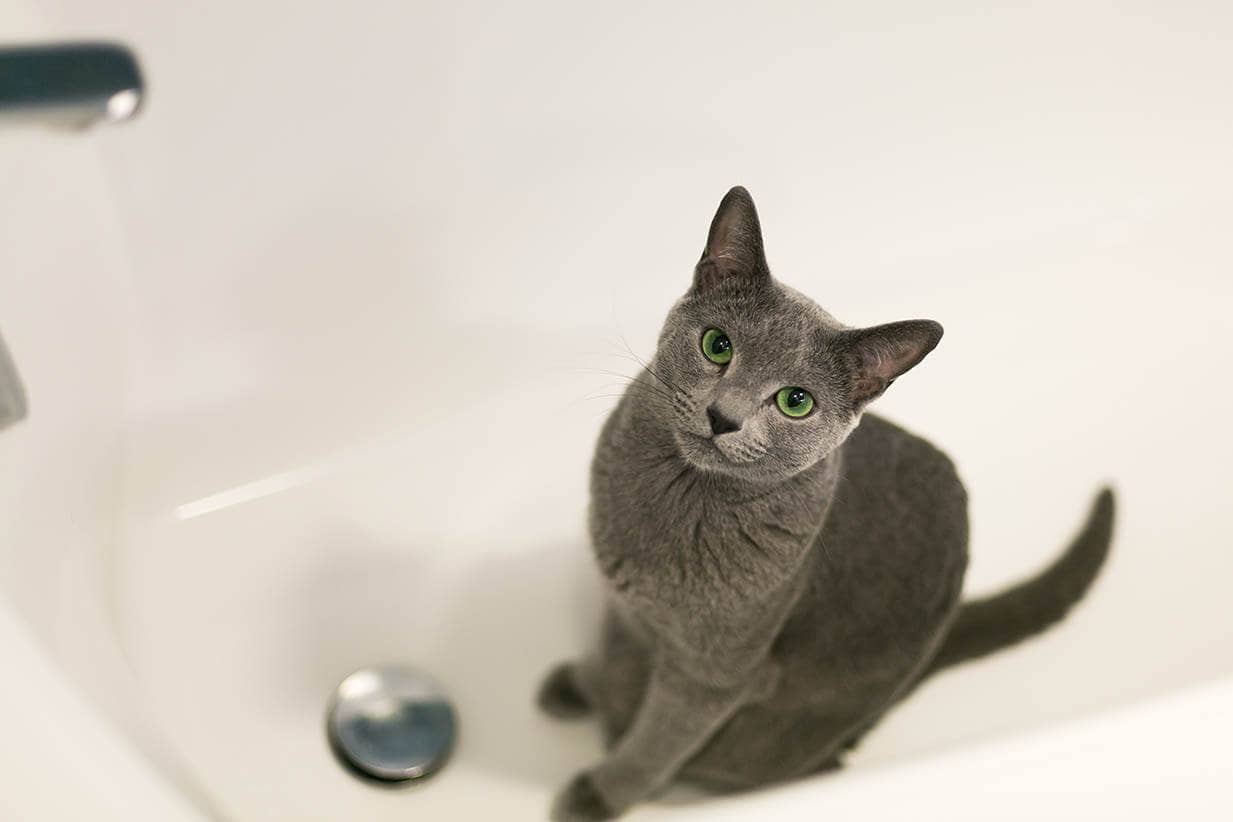
Some people are unaware that cats need to be bathed sometimes. Long-haired cats especially benefit from baths, as cats aren’t evolutionarily designed to have long fur (it’s a recessive genetic trait.) Even short-haired cats can benefit from baths when they get older and lose mobility in their legs and back, as it’s harder for them to groom themselves.
Unfortunately, those who aren’t professional pet groomers have probably never even held a high-velocity dryer, let alone have one in the house! So, what’s a cat parent to do? Here’s how you can dry a cat after a bath without getting scratched up!

The 7 Steps to Dry a Cat After a Bath
1. See Things From Your Cat’s Point of View
The first step is to get in the right mindset. Remember that your cat will be going through something stressful and scary, especially if they’re new to baths. Understanding why your cat is so upset will allow you to be more empathetic to your cat’s situation and handle everything with the grace your cat needs from you.
Make sure you pick out an old towel to use. That way, you won’t worry about whether your cat will scratch or claw the towel in fear.
2. Spread Out a Towel Next to the Tub or Sink
Let your cat get out of the tub on their own. If your cat is too shocked by the bath, you can help them out, but letting them get out by themselves will help them feel like they have agency in the situation and prevent them from feeling too out of sorts.

3. Place Your Cat on the Towel and Wrap Them Up
Wrap the towel around your cat the long way. Your cat will almost certainly try to fight you, so hold them still gently with one hand while you wrap the towel around them snugly and then pull the towel away from their face.
4. Sit With Your Cat on Your Lap
Hold your cat snugly against your body with them in your lap, wrapped in the towel. Don’t start rubbing them dry; that will scare them. Instead, just sit with them in your lap and hold them gently to help them calm down.

5. Wring Out Your Cat’s Fur
Squeeze the towel bundle gently to push the water out of your cat’s fur and into the towel. Don’t squeeze hard as you would for an inanimate object, though—just enough to express some of the water in your cat’s fur.
6. Blot Your Cat’s Fur Until It’s Damp
You don’t want to rub the cat’s fur because that will scare them and irritate the skin. Instead, press the towel against the cat’s body to blot the water out of their fur. Do this until the cat is lightly damp rather than dripping wet.

7. Put Your Cat in a Warm Room
As the water in your cat’s fur and on their skin evaporates, it will make them feel cold. This is because it must absorb heat from a heat source for water to evaporate. In the case of the water in your cat’s fur—or the water on your skin after a shower—the heat source the water is absorbing from is the creature’s body it sits on, making that heat source drop in overall temperature. This phenomenon is called “evaporative cooling,” and it’s the same reason you feel cold when you get out of the shower.
Putting your cat in a warm room will help counter the evaporative cooling effect and protect them from hypothermia. While it might sound silly that a cat could get hypothermia from a bath, you must remember that their fur traps a lot more water than can sit on top of a human’s skin. So, they get colder than we do.
Don’t put your cat next to the heater or turn up the heat—unless it’s winter and the room would be cold without it. Instead, leave the heat at a lukewarm temperature and spread a warm blanket out for your cat to lay on while their fur dries.
Putting your cat too close to the heat could burn their skin and leave them with injuries to go with their wet fur. The heater could burn your cat, but they could also get a burn from the water evaporating at a higher temperature than their body temperature.

Why You Shouldn’t Use a Hairdryer
Cats generally find hairdryers objectionable because they don’t like the sound, the feeling of the wind, or the heat. Everything about a hairdryer is offensive to the senses of cats. Your cat will almost certainly freak out if you try to use a hairdryer on them.
Whipping out a hairdryer might be tempting, but it isn’t just scary for your cat; it’s also irritating for their skin. Furthermore, you can burn yourself with a hairdryer, so you can burn your cat too.
How to Make Bathing Your Cat Easier
Acclimate yourself and your cat to the bathing process before you start bathing them. It’s better to get your cat acclimated to bathing before their first bath and preferably when they’re much younger. It’s harder to adapt an old cat to new situations and stimuli than a young one. Plus, if you acclimate your cat when they’re young, they’ll be a professional bath-taker by the time they’re old enough to need baths.

Getting Your Cat Acclimated to Baths
Getting your cat acclimated to baths is easier than you might think! But it’s a slow process. So, it’s best to start as young as you can.
When your cat is used to being wet, it’s time to try a real bath. If your cat reacts negatively, go back to a previous step, and help them get comfortable with it again.

Final Thoughts
It’s hard to imagine a cat taking a bath, but it turns out that it needs to happen sometimes. So, it’s best to get your cat ready for the inevitable to lessen your collective pain!
Featured Image Credit: KDdesignphoto, Shutterstock





